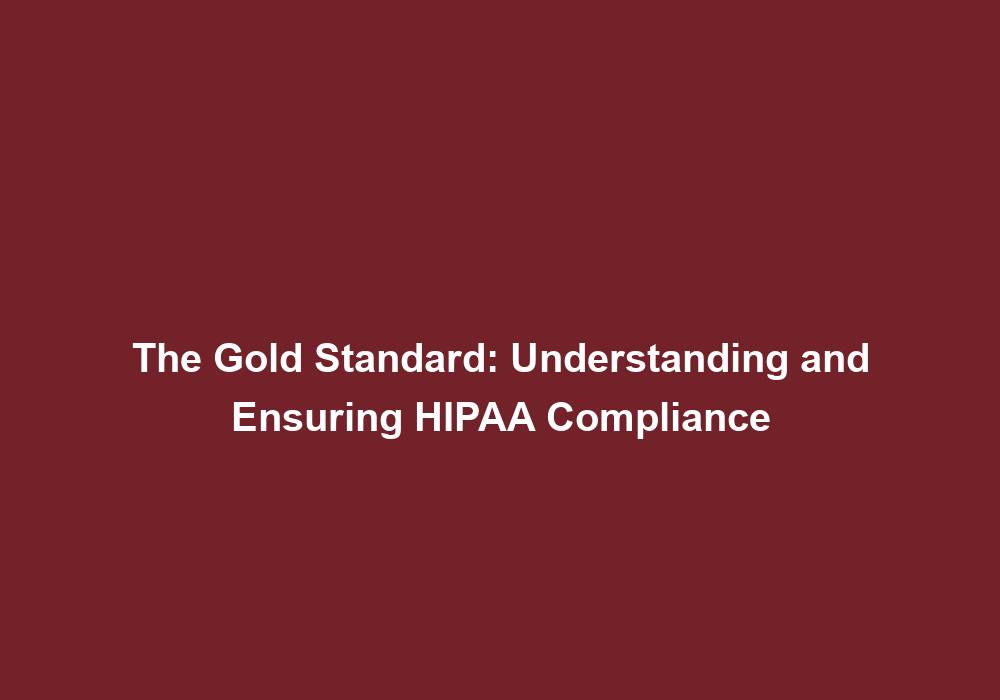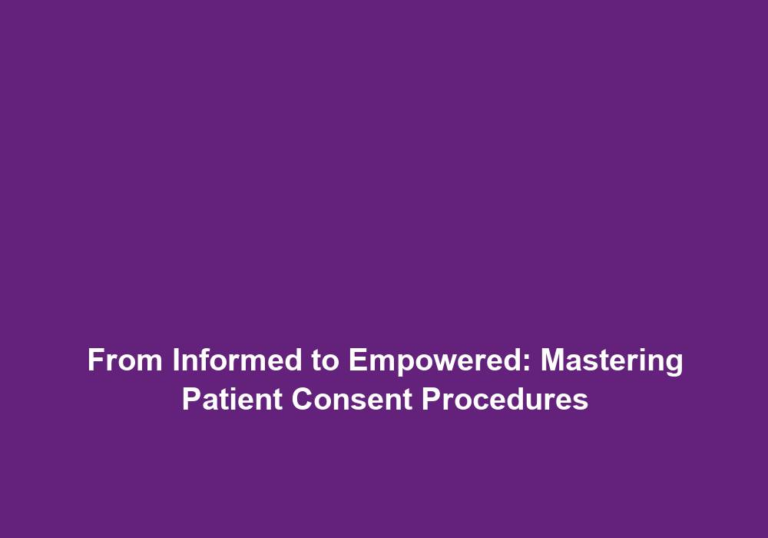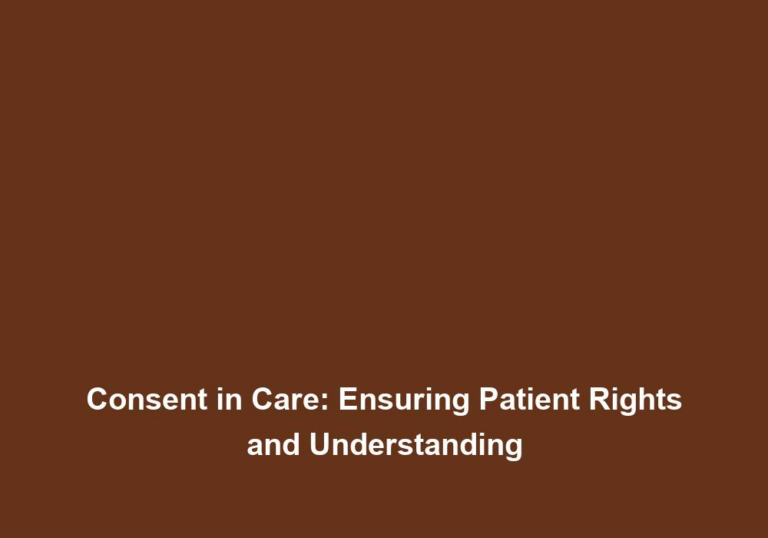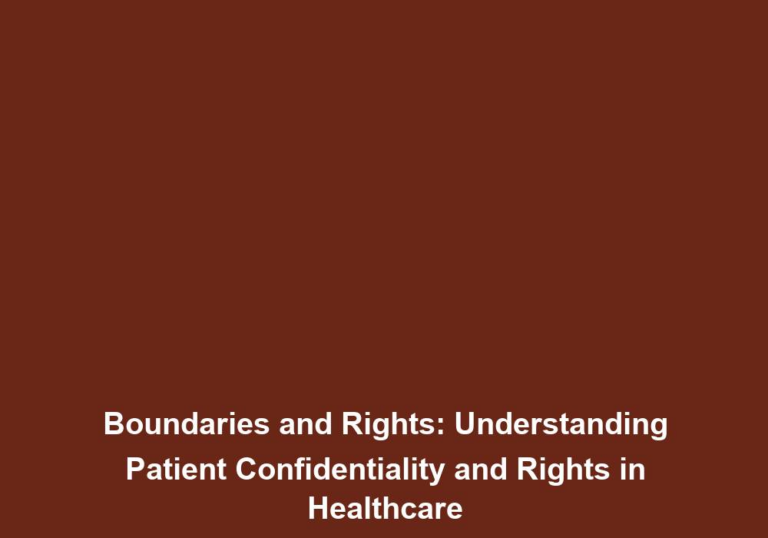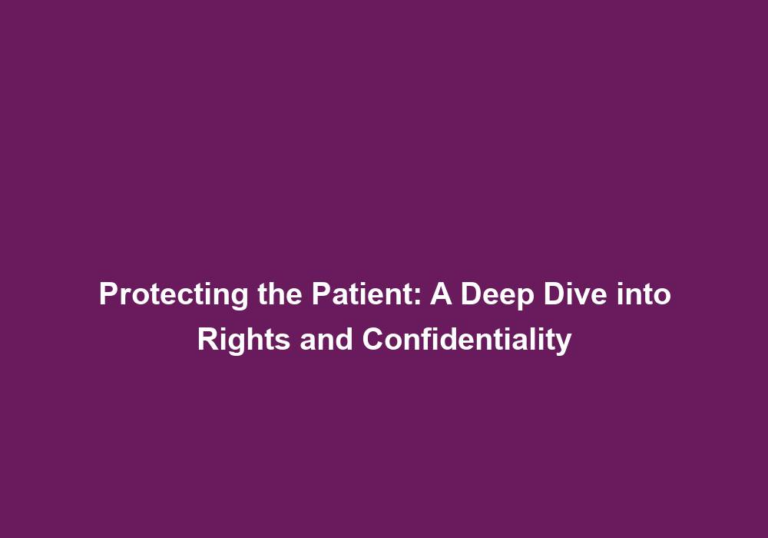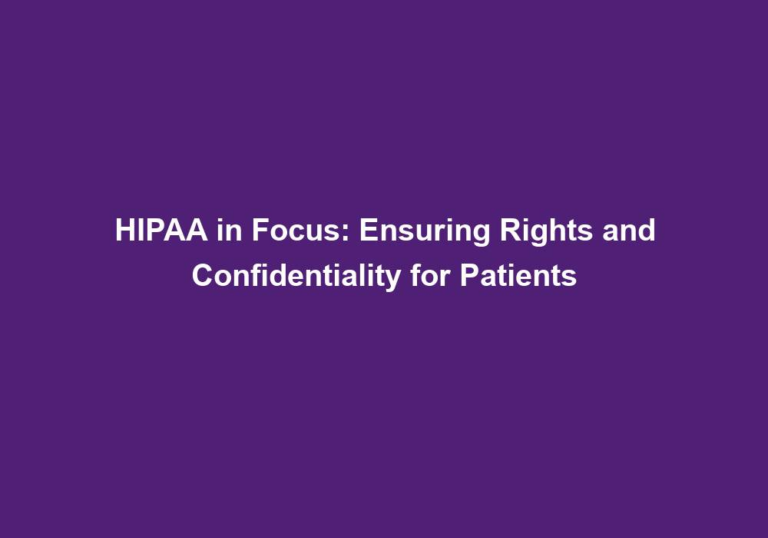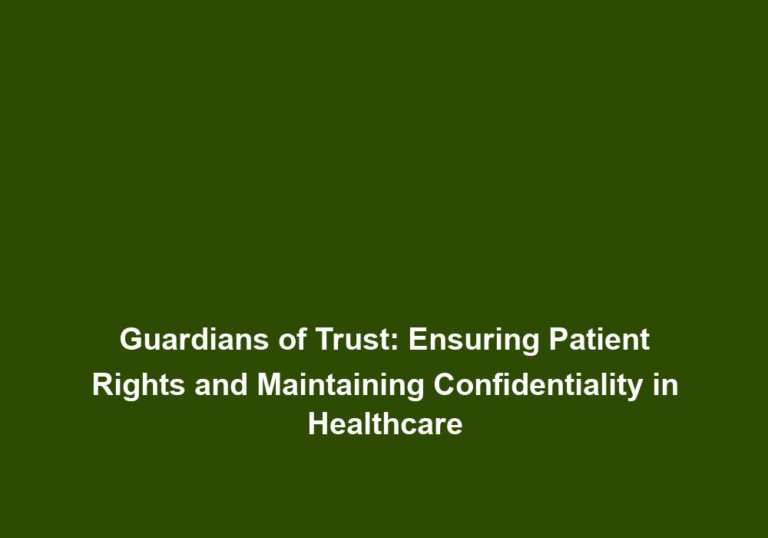The Gold Standard: Understanding and Ensuring HIPAA Compliance
In today’s digital age, where the exchange and storage of sensitive healthcare information have become commonplace, it is crucial for healthcare organizations to prioritize the protection of patient data. This is where the Health Insurance Portability and Accountability Act (HIPAA) comes into play as the gold standard for ensuring the privacy and security of electronic protected health information (ePHI). In this article, we will delve deep into the concept of HIPAA compliance, its significance, and the steps that healthcare providers must take to ensure they meet the gold standard.
What is HIPAA Compliance?
HIPAA compliance refers to adhering to the regulations and requirements set forth by the Health Insurance Portability and Accountability Act of 1996. The act was enacted to protect the privacy and security of patients’ health information, establish national standards for electronic healthcare transactions, and ensure the integrity and confidentiality of electronic protected health information.
As healthcare providers handle vast amounts of ePHI, ensuring HIPAA compliance is of utmost importance. It not only helps safeguard patient data but also protects healthcare organizations from potential legal and financial consequences due to non-compliance.
The Key Components of HIPAA Compliance
To understand and ensure HIPAA compliance, healthcare organizations must be well-versed in its key components. Let’s explore these components in detail:
1. Privacy Rule
The HIPAA Privacy Rule establishes standards for protecting patients’ medical records and other personal health information. It sets limits on the uses and disclosures of ePHI without patient authorization and grants individuals certain rights over their health information. Healthcare providers must implement policies and procedures to safeguard patient privacy and ensure compliance with the Privacy Rule.
- The Privacy Rule requires healthcare providers to obtain written consent from patients before using or disclosing their health information for purposes unrelated to treatment, payment, and healthcare operations.
- It also grants patients the right to access and request amendments to their health records, as well as the right to request an accounting of disclosures made by the healthcare provider.
- To comply with the Privacy Rule, healthcare organizations should establish secure systems for storing and transmitting patient information, implement access controls to limit unauthorized access, and train staff on privacy practices.
2. Security Rule
The HIPAA Security Rule focuses on the technical and administrative safeguards that healthcare organizations must implement to protect ePHI. It requires entities to conduct risk assessments, implement security measures to mitigate identified risks, and establish policies and procedures to control access to ePHI. Compliance with the Security Rule is crucial for safeguarding patient data against unauthorized access, disclosure, and potential breaches.
- The Security Rule requires healthcare organizations to conduct regular risk assessments to identify potential vulnerabilities and threats to ePHI. This includes assessing the security of their systems, networks, and physical infrastructure.
- Based on the risk assessment, healthcare providers must implement appropriate security measures, such as encryption, access controls, and audit logs, to protect ePHI from unauthorized access or disclosure.
- Policies and procedures should be developed to govern access to ePHI, including user authentication, password management, and workforce training on security awareness and incident response.
3. Breach Notification Rule
Under the HIPAA Breach Notification Rule, healthcare organizations are required to provide notifications in the event of a data breach involving unsecured ePHI. The rule outlines the steps that must be taken to investigate breaches, notify affected individuals, and mitigate potential harm. Prompt and accurate breach notification is essential to maintaining transparency and trust with patients.
- The Breach Notification Rule requires healthcare providers to conduct a risk assessment to determine if a breach of unsecured ePHI has occurred. If the breach poses a significant risk of harm to individuals, the healthcare organization must provide notification to affected individuals, the Secretary of Health and Human Services, and, in some cases, the media.
- Notifications should include information about the breach, steps individuals can take to protect themselves, and contact information for further assistance.
- Healthcare organizations should have a well-defined breach response plan in place, including procedures for investigating and containing breaches, notifying affected individuals, and implementing corrective actions to prevent future breaches.
4. Enforcement Rule
The HIPAA Enforcement Rule lays out the procedures for investigations, compliance reviews, and the imposition of penalties for non-compliance. It establishes the Office for Civil Rights (OCR) as the primary enforcer of HIPAA regulations. Healthcare organizations must be aware of the enforcement processes and potential penalties associated with HIPAA violations to ensure strict compliance.
- The Enforcement Rule gives the OCR the authority to investigate complaints, conduct compliance reviews, and impose penalties for HIPAA violations. Penalties can range from monetary fines to corrective action plans and even criminal charges in cases of willful neglect.
- Healthcare providers should establish a culture of compliance within their organizations, conducting regular internal audits and self-assessments to identify and address any potential violations.
- It is crucial to stay updated on changes to HIPAA regulations and guidance issued by the OCR to ensure ongoing compliance.
Steps to Achieve HIPAA Compliance
To achieve and maintain HIPAA compliance, healthcare providers must take several essential steps. These steps include:
1. Conducting a Risk Assessment
A comprehensive risk assessment is the foundation of HIPAA compliance. It involves identifying potential threats and vulnerabilities to ePHI and assessing the level of risk they pose. This assessment helps healthcare organizations prioritize security measures and develop a risk management plan.
- Healthcare providers should conduct a thorough assessment of their systems, networks, and physical infrastructure to identify potential risks to the confidentiality, integrity, and availability of ePHI.
- The risk assessment should consider factors such as unauthorized access, data breaches, system failures, and natural disasters.
- Based on the assessment, healthcare organizations can prioritize areas for improvement and develop a risk management plan that includes appropriate security measures and safeguards.
2. Developing Policies and Procedures
Healthcare providers must establish and implement policies and procedures that address the requirements outlined in the HIPAA Privacy, Security, and Breach Notification Rules. These policies should cover areas such as data access controls, employee training, incident response, and breach management.
- Policies and procedures should be written, documented, and communicated to all employees, contractors, and business associates who handle ePHI.
- They should address specific requirements of the Privacy, Security, and Breach Notification Rules, including patient consent, access controls, incident reporting, and breach response.
- Regular review and updates to policies and procedures should be conducted to ensure they remain current and aligned with changes in technology and regulations.
3. Training Staff
Ensuring that staff members are well-informed about HIPAA regulations and their responsibilities is vital for maintaining compliance. Healthcare organizations should provide regular training sessions to educate employees on privacy and security best practices, proper handling of ePHI, and incident reporting procedures.
- Training sessions should cover the basics of HIPAA compliance, including the Privacy, Security, and Breach Notification Rules, as well as the organization’s policies and procedures.
- Employees should be trained on the importance of safeguarding patient privacy, recognizing security threats, and reporting incidents promptly.
- Regular refresher training should be provided to keep employees up to date with changes in regulations and emerging security risks.
4. Implementing Technical Safeguards
The Security Rule mandates the implementation of various technical safeguards to protect ePHI. This may include measures such as encryption, access controls, audit logs, and secure data transmission. Healthcare providers should leverage advanced technology solutions and regularly update their systems to meet these requirements.
- Encryption should be implemented to protect ePHI both at rest and in transit. This ensures that even if unauthorized individuals gain access to the data, it remains unreadable and unusable.
- Access controls, such as unique user IDs, passwords, and role-based access, should be implemented to ensure that only authorized individuals can access ePHI.
- Audit logs should be generated and regularly reviewed to track and monitor access to ePHI, detect any unauthorized activity, and facilitate incident response and investigation.
5. Conducting Audits and Monitoring
Regular auditing and monitoring of systems and procedures are essential to identify any potential vulnerabilities or non-compliance issues. Healthcare organizations should conduct internal audits, penetration testing, and vulnerability assessments to ensure the ongoing effectiveness of their security measures.
- Internal audits should be conducted to assess compliance with HIPAA requirements, identify any gaps or weaknesses, and implement corrective actions.
- Penetration testing can help identify vulnerabilities in systems and networks that could be exploited by malicious actors. Regular testing should be conducted to ensure the security of ePHI.
- Vulnerability assessments should be performed to identify and address any weaknesses in the organization’s infrastructure, applications, and processes that could pose a risk to ePHI.
6. Responding to Incidents
In the unfortunate event of a data breach or security incident, healthcare providers must have a well-defined incident response plan in place. This plan should outline the steps to be taken, including containment, notification, and remediation. Responding promptly and effectively to incidents can help minimize potential harm and mitigate legal and reputational risks.
- The incident response plan should define roles and responsibilities, establish communication protocols, and provide clear guidelines for handling incidents.
- Immediate steps should be taken to contain the breach, minimize further harm, and preserve evidence for investigation.
- Prompt notification should be provided to affected individuals, regulatory authorities, and other stakeholders as required by the Breach Notification Rule.
The Benefits of HIPAA Compliance
Beyond the legal and regulatory requirements, HIPAA compliance offers several benefits for healthcare organizations. These include:
- Enhanced Patient Trust: HIPAA compliance demonstrates a commitment to protecting patient privacy, instilling trust and confidence in both current and potential patients.
- Reduced Risk of Data Breaches: By implementing the necessary safeguards and protocols, healthcare providers can significantly reduce the risk of data breaches and potential financial losses associated with a breach.
- Avoiding Penalties and Legal Consequences: Strict adherence to HIPAA regulations helps avoid costly fines, legal actions, and reputational damage resulting from non-compliance.
- Improved Data Management: Compliance requirements promote better data management practices, ensuring the accuracy, integrity, and availability of ePHI when needed.
- Competitive Advantage: HIPAA compliance can serve as a competitive differentiator, attracting patients who prioritize privacy and security when choosing healthcare providers.
In conclusion, understanding and ensuring HIPAA compliance is essential for healthcare organizations aiming to safeguard patient information and maintain the highest standards of privacy and security. By familiarizing themselves with the key components of HIPAA compliance and following the necessary steps, healthcare providers can establish a robust framework that protects patient data, mitigates risks, and fosters trust in an increasingly digital healthcare landscape.

